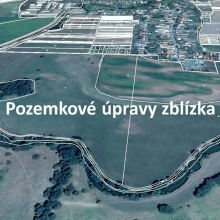zprávy
zdroje zpráv:Stav komunikací II. a III. třídy
3.2.2021 12:20 Jihočeský kraj Mapová aplikace Stav komunikací II. a III. třídy byla aktualizována o rok 2020.Is this the end of the A-68A iceberg?
3.2.2021 12:05 ESA Observing the Earth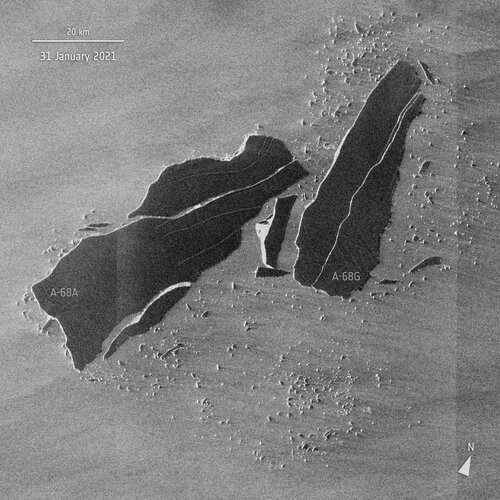
Satellite images have revealed that the once colossal A-68A iceberg has had yet another shattering experience. Several large cracks were spotted in the berg last week and it has since broken into multiple pieces. These little icebergs could indicate the end of A-68A’s environmental threat to South Georgia.
Zveřejnění obsahu informací poskytnutých na žádost dle zákona č. 106/1999 Sb. za rok 2021
3.2.2021 11:06 ČÚZK /Urady/Cesky-urad-zememericky-a-katastralni/Casto-hledane-informace/Poskytovani-informaci-106-1999-Sb/Zverejneni-obsahu-informaci-poskytnutych-na-za-(1)/Rok2008-2013/Zverejneni-obsahu-informaci-poskytnutych-na-za-(3)Zveřejnění obsahu informací poskytnutých na žádost dle zákona č. 106/1999 Sb. za rok 2021
3.2.2021 11:06 ČÚZK - předpisy a opatření Český úřad zeměměřický a katastrálnízveřejňuje obsah informace poskytnutých na žádost dle zákona č. 106/1999 Sb. za rok
2021
Zveřejnění obsahu informací poskytnutých na žádost dle zákona č. 106/1999 Sb. za rok 2021
3.2.2021 11:06 ČÚZK - předpisy a opatření Český úřad zeměměřický a katastrálnízveřejňuje obsah informace poskytnutých na žádost dle zákona č. 106/1999 Sb. za rok
2021
Zveřejnění obsahu informací poskytnutých na žádost dle zákona č. 106/1999 Sb. za rok 2021
3.2.2021 11:06 ČÚZK /Urady/Cesky-urad-zememericky-a-katastralni/Casto-hledane-informace/Poskytovani-informaci-106-1999-Sb/Zverejneni-obsahu-informaci-poskytnutych-na-za-(1)/Zverejneni-obsahu-informaci-poskytnutych-na-za-(3)Aktualizace Základní mapy 1:200 000
3.2.2021 9:19 ČÚZK - Geoportál Aktualizace Základní mapy 1:200 000Rastrová data Základní mapy 1:200 000 byla aktualizována.
Aktualizace probíhá u tohoto produktu najednou po 2 až 3 letech pro celé území ČR. Poslední vydání je z roku 2020. Stav silničních komunikací odpovídá minimálně 1. 7. 2020. Stav správního členění již odpovídá zákonu č. 51/2020 Sb., o územně správním členění státu, platnému od 1. 1. 2021.
Nové soubory ve formátu TIF již lze objednávat v aplikaci e-shop. Příslušné prohlížecí služby WMS ZM 200 a služby AGS a WMTS pro Základní mapy jsou již také aktualizovány a jsou dostupné například v aplikaci Geoprohlížeč.
Aktualizace Základní mapy 1:200 000
3.2.2021 9:19 ČÚZK - Geoportál Aktualizace Základní mapy 1:200 000Rastrová data Základní mapy 1:200 000 byla aktualizována.
Aktualizace probíhá u tohoto produktu najednou po 2 až 3 letech pro celé území ČR. Poslední vydání je z roku 2020. Stav silničních komunikací odpovídá minimálně 1. 7. 2020. Stav správního členění již odpovídá zákonu č. 51/2020 Sb., o územně správním členění státu, platnému od 1. 1. 2021.
Nové soubory ve formátu TIF již lze objednávat v aplikaci e-shop. Příslušné prohlížecí služby WMS ZM 200 a služby AGS a WMTS pro Základní mapy jsou již také aktualizovány a jsou dostupné například v aplikaci Geoprohlížeč.
Aktualizace Základní mapy 1:200 000
3.2.2021 9:19 ČÚZK - Geoportál Aktualizace Základní mapy 1:200 000Rastrová data Základní mapy 1:200 000 byla aktualizována.
Aktualizace probíhá u tohoto produktu najednou po 2 až 3 letech pro celé území ČR. Poslední vydání je z roku 2020. Stav silničních komunikací odpovídá minimálně 1. 7. 2020. Stav správního členění již odpovídá zákonu č. 51/2020 Sb., o územně správním členění státu, platnému od 1. 1. 2021.
Nové soubory ve formátu TIF již lze objednávat v aplikaci e-shop. Příslušné prohlížecí služby WMS ZM 200 a služby AGS a WMTS pro Základní mapy jsou již také aktualizovány a jsou dostupné například v aplikaci Geoprohlížeč.
Aktualizace Základní mapy 1:200 000
3.2.2021 9:19 ČÚZK - Geoportál Aktualizace Základní mapy 1:200 000Rastrová data Základní mapy 1:200 000 byla aktualizována.
Aktualizace probíhá u tohoto produktu najednou po 2 až 3 letech pro celé území ČR. Poslední vydání je z roku 2020. Stav silničních komunikací odpovídá minimálně 1. 7. 2020. Stav správního členění již odpovídá zákonu č. 51/2020 Sb., o územně správním členění státu, platnému od 1. 1. 2021.
Nové soubory ve formátu TIF již lze objednávat v aplikaci e-shop. Příslušné prohlížecí služby WMS ZM 200 a služby AGS a WMTS pro Základní mapy jsou již také aktualizovány a jsou dostupné například v aplikaci Geoprohlížeč.
Aktualizace Základní mapy 1:200 000
3.2.2021 9:19 ČÚZK - Geoportál Aktualizace Základní mapy 1:200 000Rastrová data Základní mapy 1:200 000 byla aktualizována.
Aktualizace probíhá u tohoto produktu najednou po 2 až 3 letech pro celé území ČR. Poslední vydání je z roku 2020. Stav silničních komunikací odpovídá minimálně 1. 7. 2020. Stav správního členění již odpovídá zákonu č. 51/2020 Sb., o územně správním členění státu, platnému od 1. 1. 2021.
Nové soubory ve formátu TIF již lze objednávat v aplikaci e-shop. Příslušné prohlížecí služby WMS ZM 200 a služby AGS a WMTS pro Základní mapy jsou již také aktualizovány a jsou dostupné například v aplikaci Geoprohlížeč.
Aktualizace Základní mapy 1:200 000
3.2.2021 9:19 ČÚZK - Geoportál Aktualizace Základní mapy 1:200 000Rastrová data Základní mapy 1:200 000 byla aktualizována.
Aktualizace probíhá u tohoto produktu najednou po 2 až 3 letech pro celé území ČR. Poslední vydání je z roku 2020. Stav silničních komunikací odpovídá minimálně 1. 7. 2020. Stav správního členění již odpovídá zákonu č. 51/2020 Sb., o územně správním členění státu, platnému od 1. 1. 2021.
Nové soubory ve formátu TIF již lze objednávat v aplikaci e-shop. Příslušné prohlížecí služby WMS ZM 200 a služby AGS a WMTS pro Základní mapy jsou již také aktualizovány a jsou dostupné například v aplikaci Geoprohlížeč.
Aktualizace Základní mapy 1:200 000
3.2.2021 9:19 ČÚZK - Geoportál Aktualizace Základní mapy 1:200 000Rastrová data Základní mapy 1:200 000 byla aktualizována.
Aktualizace probíhá u tohoto produktu najednou po 2 až 3 letech pro celé území ČR. Poslední vydání je z roku 2020. Stav silničních komunikací odpovídá minimálně 1. 7. 2020. Stav správního členění již odpovídá zákonu č. 51/2020 Sb., o územně správním členění státu, platnému od 1. 1. 2021.
Nové soubory ve formátu TIF již lze objednávat v aplikaci e-shop. Příslušné prohlížecí služby WMS ZM 200 a služby AGS a WMTS pro Základní mapy jsou již také aktualizovány a jsou dostupné například v aplikaci Geoprohlížeč.
Aktualizace Základní mapy 1:200 000
3.2.2021 9:19 ČÚZK - Geoportál Aktualizace Základní mapy 1:200 000Rastrová data Základní mapy 1:200 000 byla aktualizována.
Aktualizace probíhá u tohoto produktu najednou po 2 až 3 letech pro celé území ČR. Poslední vydání je z roku 2020. Stav silničních komunikací odpovídá minimálně 1. 7. 2020. Stav správního členění již odpovídá zákonu č. 51/2020 Sb., o územně správním členění státu, platnému od 1. 1. 2021.
Nové soubory ve formátu TIF již lze objednávat v aplikaci e-shop. Příslušné prohlížecí služby WMS ZM 200 a služby AGS a WMTS pro Základní mapy jsou již také aktualizovány a jsou dostupné například v aplikaci Geoprohlížeč.
Aktualizace Základní mapy 1:200 000
3.2.2021 9:19 ČÚZK - Geoportál Aktualizace Základní mapy 1:200 000Rastrová data Základní mapy 1:200 000 byla aktualizována.
Aktualizace probíhá u tohoto produktu najednou po 2 až 3 letech pro celé území ČR. Poslední vydání je z roku 2020. Stav silničních komunikací odpovídá minimálně 1. 7. 2020. Stav správního členění již odpovídá zákonu č. 51/2020 Sb., o územně správním členění státu, platnému od 1. 1. 2021.
Nové soubory ve formátu TIF již lze objednávat v aplikaci e-shop. Příslušné prohlížecí služby WMS ZM 200 a služby AGS a WMTS pro Základní mapy jsou již také aktualizovány a jsou dostupné například v aplikaci Geoprohlížeč.
Aktualizace Základní mapy 1:200 000
3.2.2021 9:19 ČÚZK - Geoportál Aktualizace Základní mapy 1:200 000Rastrová data Základní mapy 1:200 000 byla aktualizována.
Aktualizace probíhá u tohoto produktu najednou po 2 až 3 letech pro celé území ČR. Poslední vydání je z roku 2020. Stav silničních komunikací odpovídá minimálně 1. 7. 2020. Stav správního členění již odpovídá zákonu č. 51/2020 Sb., o územně správním členění státu, platnému od 1. 1. 2021.
Nové soubory ve formátu TIF již lze objednávat v aplikaci e-shop. Příslušné prohlížecí služby WMS ZM 200 a služby AGS a WMTS pro Základní mapy jsou již také aktualizovány a jsou dostupné například v aplikaci Geoprohlížeč.
Ukončení EGON služby E41 isknCtiVlastniky
3.2.2021 9:09 ČÚZK /Aplikace-DP-do-KN/Aplikace-DP-do-KN/Archiv-DP/313324Ukončení EGON služby E41 isknCtiVlastniky
3.2.2021 9:09 Dálkový přístup k údajům KN ČROznamujeme ukončení poskytování EGON služby E41 isknCtiVlastniky k 31.8.2021. Služba E41 je plně nahrazena E238 isknCtiVlastniky2.
Více informací je možné nalézt na našich stránkách https://www.cuzk.cz/Katastr-nemovitosti/Poskytovani-udaju-z-KN/Informace-poskytovane-prostrednictvim-eGON-sluzeb.aspx a nebo přímo na stránkách SZR https://www.szrcr.cz/cs/archiv-novinek/vyvojari-a-spravci-ais/166-nov%C3%A1-verze-katalogu-egon-slu%C5%BEeb-3.
Doporučujeme přejít na využívání nové služby E238 isknCtiVlastniky2 co nejdříve, nejpozději do konce srpna 2021.
Ukončení EGON služby E41 isknCtiVlastniky
3.2.2021 9:09 ČÚZK - předpisy a opatřeníOznamujeme ukončení poskytování EGON služby E41 isknCtiVlastniky k 31.8.2021. Služba E41 je plně nahrazena E238 isknCtiVlastniky2.
Více informací je možné nalézt na našich stránkách https://www.cuzk.cz/Katastr-nemovitosti/Poskytovani-udaju-z-KN/Informace-poskytovane-prostrednictvim-eGON-sluzeb.aspx a nebo přímo na stránkách SZR https://www.szrcr.cz/cs/archiv-novinek/vyvojari-a-spravci-ais/166-nov%C3%A1-verze-katalogu-egon-slu%C5%BEeb-3.
Doporučujeme přejít na využívání nové služby E238 isknCtiVlastniky2 co nejdříve, nejpozději do konce srpna 2021.
Na webových stránkách naší spo
3.2.2021 0:00 SolidVision Na webových stránkách naší společnosti je v sekci Podpora > Ke stažení k dispozici SP5 pro SOLIDWORKS 2020.Na webových stránkách naší spo
3.2.2021 0:00 SolidVision Na webových stránkách naší společnosti je v sekci Podpora > Ke stažení k dispozici SP5 pro SOLIDWORKS 2020.ASPRS ANNOUNCES STUDENT CONFERENCE PRESENTATION GRANTS!
2.2.2021 21:20 GISCafe.com Webcasts-Webinars February 02, 2021 -- ASPRS, with support of the ASPRS Foundation, has identified funding to sponsor Student Presentations in the upcoming ASPRS 2021 …Dedrone First to Offer Both United States and European Union Drone Remote ID Capability
2.2.2021 17:41 GISCafe.com Webcasts-Webinars Global airspace security leader enables its customers to leverage global Remote ID standards to identify drones and their pilotsSAN FRANCISCO, Feb. …
Onward and Upward: Annual US Home Price Appreciation in 2020 Outpaced 2019 Levels by 50%, CoreLogic Reports
2.2.2021 16:07 GISCafe.com Webcasts-Webinars U.S. Home Price Index up 9.2% in December from a year earlier, largest annual gain in more than six years fueled by low inventory and attractive …MDA Announces RADARSAT-2 Continuity Mission
2.2.2021 16:07 GISCafe.com Webcasts-Webinars BRAMPTON, ON, Feb. 2, 2021 — (PRNewswire) —New satellite mission will provide advanced commercialEarth observation imagery, products …
Satellite observations prove crucial in new climate science report
2.2.2021 15:15 ESA Observing the Earth
With impacts from climate change threatening major disruption to society in the coming years, leading scientists have released a compilation of the 10 most important insights on climate to help inform collective action on the ongoing climate crisis, in which satellites have played a crucial role in aiding scientific understanding.
Leica Zeno FLX100
2.2.2021 12:15 GEFOS Univerzální GIS/GNSS přijímač s 2 cm přesností k vlastnímu mobilu, tabletu nebo na tyčku. Použijete ho s vlastním softwarem nebo s aplikací Leica Zeno Mobile pro snadný sběr GIS dat.Aktualizovaná verze okruhů k SZZ v. 2021
2.2.2021 11:15 Katedra geoinformatiky UP OlomoucV sekci Dokumenty byly zveřejněny aktuální okruhy ke Státním závěrečným zkouškám platné pro akademický rok 2020/21. Samostatný dokument je pro bakalářské a magisterské studium.
The post Aktualizovaná verze okruhů k SZZ v. 2021 appeared first on Katedra geoinformatiky.
revize 2021
2.2.2021 11:01 ČÚZK - předpisy a opatření Katastrální úřad pro Ústecký kraj - Katastrální pracoviště Louny zveřejnil novou aktualitu: Vážení klienti, oznamujeme Vám, že v roce 2021 budou postupně probíhat revize katastru nemovitostí v katastrálních územích Břvany, Hřivice, Touchovice, Markvarec u Hřivic, Domoušice, Konětopy u Pnětluk, Pnětluky a v současné době se dokončuje revize v k.ú. Výškov u Počerad. Předmětem revize jsou zejména zápisy staveb, druhu a způsobu využití pozemků, kdy výsledkem by mělo být dosažení co nejlepšího souladu katastru nemovitostí se skutečným stavem v terénu. O přesném termínu zahájení revize budete informováni obecním úřadem způsobem v místě obvyklém.revize 2021
2.2.2021 11:01 ČÚZK /Urady/Katastralni-urady/Katastralni-urady/Katastralni-urad-pro-Ustecky-kraj/Katastralni-pracoviste/KP-Louny/O-uradu/Aktuality/revize-2021revize 2021
2.2.2021 11:01 ČÚZK - předpisy a opatření Katastrální úřad pro Ústecký kraj - Katastrální pracoviště Louny zveřejnil novou aktualitu: Vážení klienti, oznamujeme Vám, že v roce 2021 budou postupně probíhat revize katastru nemovitostí v katastrálních územích Břvany, Hřivice, Touchovice, Markvarec u Hřivic, Domoušice, Konětopy u Pnětluk, Pnětluky a v současné době se dokončuje revize v k.ú. Výškov u Počerad. Předmětem revize jsou zejména zápisy staveb, druhu a způsobu využití pozemků, kdy výsledkem by mělo být dosažení co nejlepšího souladu katastru nemovitostí se skutečným stavem v terénu. O přesném termínu zahájení revize budete informováni obecním úřadem způsobem v místě obvyklém.revize 2022
2.2.2021 11:01 ČÚZK - předpisy a opatření Katastrální úřad pro Ústecký kraj - Katastrální pracoviště Louny zveřejnil novou aktualitu: Vážení klienti, oznamujeme Vám, že v roce 2022 budou postupně probíhat revize katastru nemovitostí v katastrálních územích Domoušice, Solopysky, Pnětluky, Konětopy u Pnětluk, Břínkov (intravilán), Úlovice (intravilán), Dolní Ročov (mimo oblast pozemkové úpravy a mapování), Divice, Brodec, Smolnice u Loun. Předmětem revize jsou zejména zápisy staveb, druhu a způsobu využití pozemků, kdy výsledkem by mělo být dosažení co nejlepšího souladu katastru nemovitostí se skutečným stavem v terénu. O přesném termínu zahájení revize budete informováni obecním úřadem způsobem v místě obvyklém.Zároveň od 2. čtvrtletí budou pokračovat práce na novém mapování v k.ú. Horní Ročov.
revize 2022
2.2.2021 11:01 ČÚZK /Urady/Katastralni-urady/Katastralni-urady/Katastralni-urad-pro-Ustecky-kraj/Katastralni-pracoviste/KP-Louny/O-uradu/Aktuality/revize-2021Webináře Otevřené jaro – program na únor 2021
2.2.2021 10:27 GISportal.cz
Plan4all pokračuje v pořádání série webinářů Otevřené jaro, která se koná každé úterý vždy ve 13:00 hod. Témata únorových webinářů jsou již zveřejněná na stránce https://www.otevrenejaro.cz/program/ 2.2.2021, 13:00 Webinář 4: Agronode – autonomní telemetrická IoT stanice 9.2.2021, 13:00 Webinář 5: AgriHub – české zemědělské inovační centrum 16.2.2021, 13:00 Webinář 6: Lesprojekt Cloud – prostředí pro aplikace a […]
The post Webináře Otevřené jaro – program na únor 2021 appeared first on GISportal.cz.
Představili jsme nové video o pozemkových úpravách
2.2.2021 9:20 Asociace podnikatelů v geomatice Začátkem roku jsme představili nové propagační video, které upozorňuje na problematiku pozemkových úprav. Video jsme rozeslali všem našim partnerům, kterých se tato problematika dotýká – poslancům, se kterými dlouhodobě o pozemkových úpravách jednáme, zástupcům Ministerstva zemědělství, Ministerstva životního prostředí, SPÚ a na další partnerské a spolupracující organizace, stejně tak jako na vzdělávací a vědecké instituce. Těší nás, že video […]Earth observation vital in monitoring wetland waters
2.2.2021 9:00 ESA Observing the Earth
Celebrated annually on 2 February, World Wetlands Day aims to raise global awareness about the importance of wetlands for our planet. This year’s theme shines a light on wetlands as a source of freshwater and encourages actions to restore them. From their vantage point of 800 km high, Earth-observing satellites provide data and imagery on wetlands that can be used to monitor and manage these precious resources sustainably.
V Brně vzniká platforma pro umělou inteligenci Brno.AI (TZ)
2.2.2021 8:59 GISportal.cz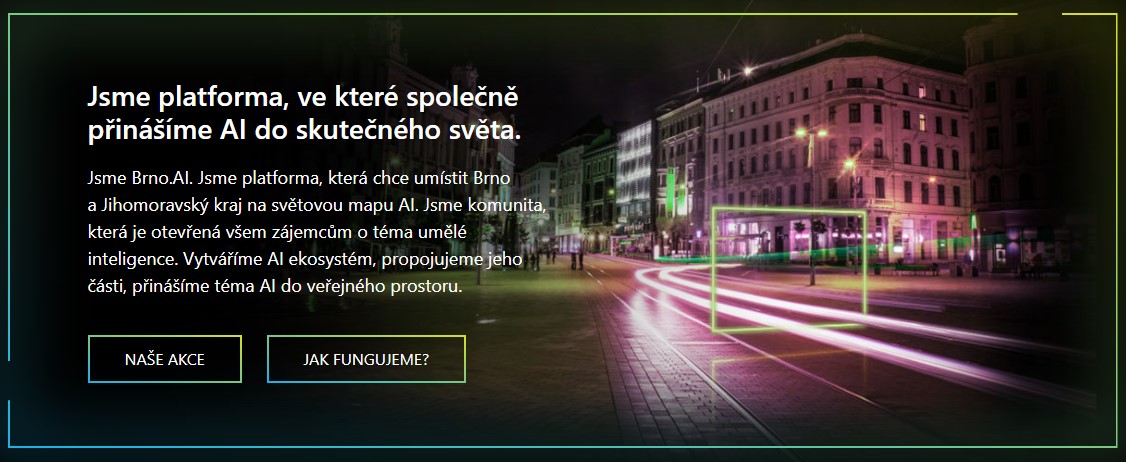
Autonomní auto, recepční, aplikace pro nevidomé, ale i rozpoznávání hlasu, virtuální elektrárna nebo vývoj léku proti koronaviru – tam všude má své místo umělá inteligence. A právě její větší využití v praktickém životě si dali za cíl brněnští odborníci z oblasti umělé inteligence, kteří ve čtvrtek představili společnou platformu Brno.ai. Stojí za ní nejen odborníci z VUT v Brně […]
The post V Brně vzniká platforma pro umělou inteligenci Brno.AI (TZ) appeared first on GISportal.cz.
Nová kniha o webové kartografii
2.2.2021 8:33 Katedra geoinformatiky UP OlomoucNétek R. (2020): Webová kartografie – specifika tvorby interaktivních map na webu. První publikace komplexně popisující aspekty a principy webové kartografie‼ Doporučujeme✔ https://webova.kartografie.upol.cz/
The post Nová kniha o webové kartografii appeared first on Katedra geoinformatiky.
Asistent/ka
2.2.2021 8:23 ČÚZK - volná místa Zeměměřický úřad vypisuje výběrové řízení na místo Asistent/kaAsistent/ka
2.2.2021 8:23 Zeměměřický úřad Zeměměřický úřadvypisuje výběrové řízení na místo
Asistent/ka
Přerušení provozu DP a WSDP ve pondělí 8.2.2021 od 20:00 do cca 23:00.
2.2.2021 6:45 ČÚZK /Aplikace-DP-do-KN/Aplikace-DP-do-KN/Archiv-DP/313090Přerušení provozu DP a WSDP ve pondělí 8.2.2021 od 20:00 do cca 23:00.
2.2.2021 6:45 ČÚZK - předpisy a opatření Vážení uživatelé,oznamujeme, že ve pondělí 8.2.2021 od 20:00 bude z provozních důvodů zcela přerušen provoz Dálkového přístupu i Webových služeb dálkového přístupu. Obnovení provozu předpokládáme v cca 23:00 hodin.
Za komplikace tímto způsobené se omlouváme a děkujeme za pochopení.
Přerušení provozu DP a WSDP ve pondělí 8.2.2021 od 20:00 do cca 23:00.
2.2.2021 6:45 Dálkový přístup k údajům KN ČR Vážení uživatelé,oznamujeme, že ve pondělí 8.2.2021 od 20:00 bude z provozních důvodů zcela přerušen provoz Dálkového přístupu i Webových služeb dálkového přístupu. Obnovení provozu předpokládáme v cca 23:00 hodin.
Za komplikace tímto způsobené se omlouváme a děkujeme za pochopení.
APGEO - Představili jsme nové video o pozemkových úpravách
2.2.2021 1:00 Asociace podnikatelů v geomatice Začátkem roku jsme představili nové propagační video, které upozorňuje na problematiku pozemkových úprav...L3Harris Technologies Named Among FORTUNE’s 2021 World’s Most Admired Companies
2.2.2021 0:44 GISCafe.com Webcasts-Webinars MELBOURNE, Fla. — (BUSINESS WIRE) — February 1, 2021 —L3Harris Technologies (NYSE:LHX) has been named among FORTUNE’s 2021 …
Interview discussing PlaceKey with Ross Epstein, VP of New Projects, SafeGraph
2.2.2021 0:43 GISCafe.com Webcasts-WebinarsPublic comment sought on v1.1 of OGC Coverage Implementation Schema (CIS) - ReferenceableGridCoverage Extension
1.2.2021 21:47 GISCafe.com Webcasts-Webinars
CIS extension revision enables OGC imagery-related standards to more concisely represent remotely-sensed imagery
1 …
Vrchní referent / rada – řízení o údajích SGI v oddělení aktualizace KN Katastrálního pracoviště Zlí
1.2.2021 16:46 ČÚZK - volná místa Katastrální úřad pro Zlínský kraj Katastrální pracoviště Zlín vypisuje výběrové řízení na místo Vrchní referent / rada – řízení o údajích SGI v oddělení aktualizace KN Katastrálního pracoviště ZlíVrchní referent / rada – řízení o údajích SGI v oddělení aktualizace KN Katastrálního pracoviště Zlí
1.2.2021 16:46 ČÚZK - předpisy a opatření Katastrální úřad pro Zlínský kraj Katastrální pracoviště Zlínvypisuje výběrové řízení na místo
Vrchní referent / rada – řízení o údajích SGI v oddělení aktualizace KN Katastrálního pracoviště Zlín
Vrchní referent / rada – řízení o údajích SGI v oddělení aktualizace KN Katastrálního pracoviště Zlí
1.2.2021 16:46 ČÚZK /Urady/Katastralni-urady/Katastralni-urady/Katastralni-urad-pro-Zlinsky-kraj/Uredni-deska/Oznameni-a-jina-uredni-sdeleni/Volna-mista/DMS/Vrchni-referent-rada-–-rizeni-o-udajich-SGI-v-odPlaceiq Acquires Skyhook's Geospatial Insights Business Line
1.2.2021 16:22 GISCafe.com Webcasts-Webinars NEW YORK, Feb. 1, 2021 — (PRNewswire) — PlaceIQ Inc., the leading data and technology provider that powers critical business …SunPower and EagleView Automate Home Survey Process for Faster, More Precise Solar Installations
1.2.2021 16:22 GISCafe.com Webcasts-Webinars Computer vision, machine-learning enable dealers to create precise, construction-ready designs without drones or in-home surveysSAN JOSE, Calif., …
Nabídka certifikovaných kurzů z pohodlí domova
1.2.2021 16:02 ARCDATAChcete si zdokonalit své dovednosti v oblastí prostorových analýz a tvorby map, nebo si třeba jen udržet krok s vývojem technologií GIS? Pak nepřehlédněte MOOC (Massive Open Online Courses) – ucelené online kurzy zaměřené vždy na konkrétní problematiku.
Pro letošek jsou v nabídce následující témata:
- Cartography
- Do-It-Yourself Geo Apps
- The Location Advantage
- Going Places with Spatial Analysis
- Spatial Data Science: The New Frontier in Analytics
Doba trvání jednoho kurzu je od čtyř do šesti týdnů a účastníci si sami řídí tempo, kterým se budou kurzu věnovat. Každá lekce se skládá z výukových videí a několika samostatných cvičení. Po dokončení kurzu jeho účastníci obdrží certifikát.
První kurz zaměřený na kartografii začíná již 3. února 2021 a přihlašovat se na něj můžete na webových stránkách Esri.
Nový web týmu Laboratorní a obrazové spektroskopie [Katedra aplikované geoinformatiky a kartografie, byTopic]
1.2.2021 14:05 Katedra aplikované geoinformatiky a kartografie Přf UK Právě byl spuštěn nový web týmu Laboratorní a obrazové spektroskopie. Tým působící na PřF UK je interdisciplinární a skládá se ze dvou úzce spolupracujících výzkumných skupin - výzkumné skupiny odd. aplikované geoinformatiky a kartografie (skupina Geoinformatika) a výzkumná skupina Dpt. experimentální biologie rostlin (skupina biologie).Nový web týmu Laboratorní a obrazové spektroskopie [Katedra aplikované geoinformatiky a kartografie, byTopic]
1.2.2021 14:05 Katedra aplikované geoinformatiky a kartografie Přf UK Právě byl spuštěn nový web týmu Laboratorní a obrazové spektroskopie. Tým působící na PřF UK je interdisciplinární a skládá se ze dvou úzce spolupracujících výzkumných skupin - výzkumné skupiny katedry aplikované geoinformatiky a kartografie (skupina Geoinformatika) a výzkumná skupina katedry. experimentální biologie rostlin (skupina biologie).Nabídka doktorského studia v programu STARS [Katedra aplikované geoinformatiky a kartografie, byTopic]
1.2.2021 13:40 Katedra aplikované geoinformatiky a kartografie Přf UK New project and research group for PhD positions. Choose project from Department of Applied Geoinformatics and Cartography.Příspěvkové organizace
1.2.2021 12:45 Středočeský kraj V mapové aplikaci Příspěvkové organizace byla aktualizována vrstva sídla příspěvkových organizací. Jedná se o roční aktualizaci zpracovanou na základě Seznamu příspěvkových organizací. Zpracovatelem seznamu je Finanční odbor.Informace o výsledcích kontrol dle § 26 zákona č. 255/2012 Sb. za rok 2020
1.2.2021 11:24 ČÚZK - předpisy a opatření Český úřad zeměměřický a katastrálnívydává informace o výsledcích kontrol dle § 26 zákona č. 255/2012 Sb. za rok
2020
Chytremapy.cz se mění. Nově ukazují rozsáhlé možnosti mapové aplikace GisOnline.cz
1.2.2021 8:54 GISportal.cz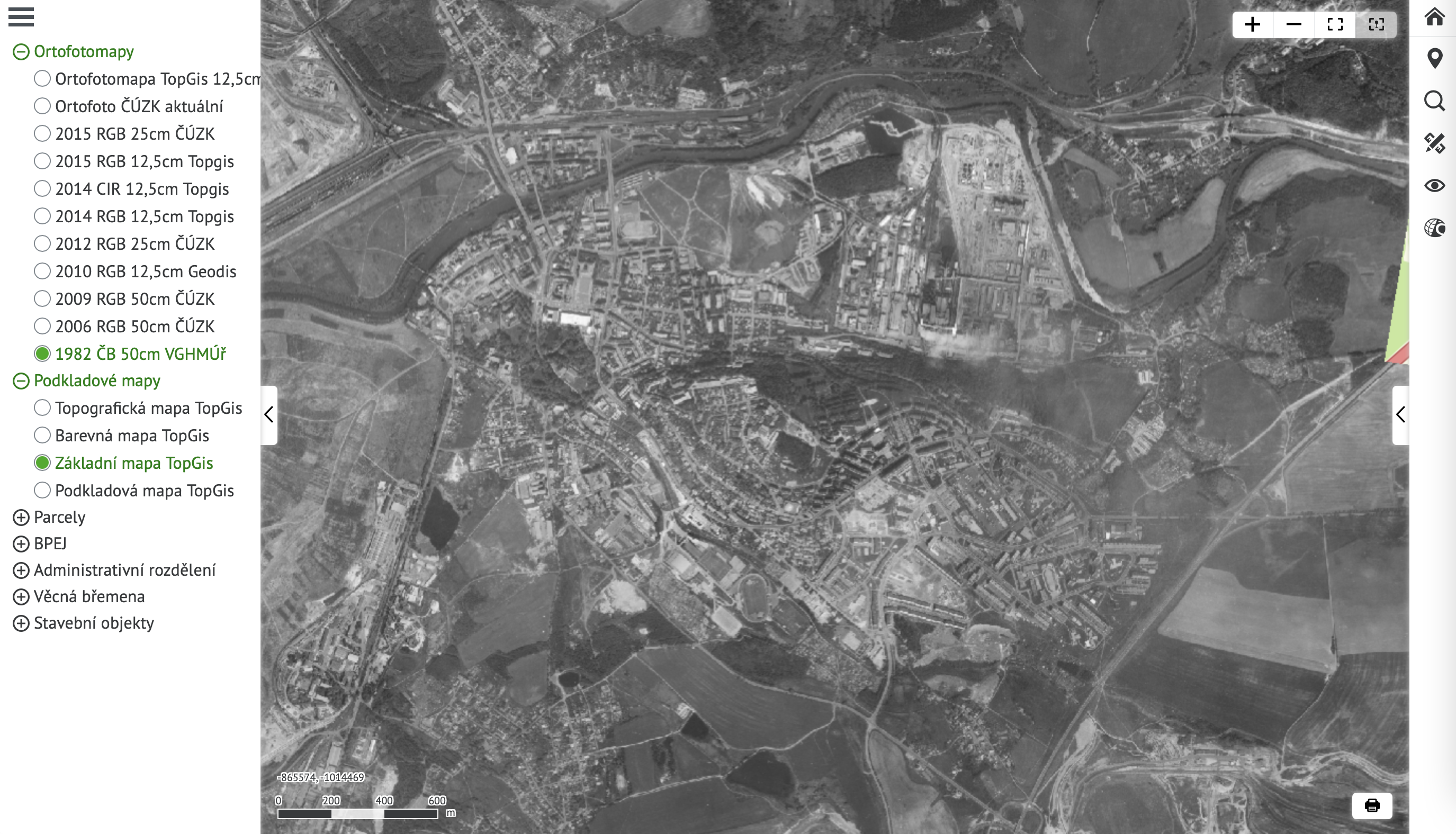
Více než dva roky nabízí portál Chytremapy.cz všem návštěvníkům zdarma kombinaci nejkvalitnějších mapových podkladů celé České republiky a přímého vstupu do katastru nemovitostí. Od ledna 2021 společnost TopGis na doméně prezentuje ukázky širokých možností, které klientům z řad měst a obcí, ale i projektantům či architektům nabízí její mapová aplikace GisOnline.cz. Více než dva roky […]
The post Chytremapy.cz se mění. Nově ukazují rozsáhlé možnosti mapové aplikace GisOnline.cz appeared first on GISportal.cz.
Webinář ELISE „Evolution of the access to spatial data for environmental purposes – Study presentation“
1.2.2021 7:00 Česká asociace pro geoinformace CENIA, česká informační agentura životního prostředí, zve na webinář s názvem Evolution of the access to spatial data for environmental purposes – Study presentation, který se uskuteční čtvrtek 4. února 2021 ve 14:00. Zájemci se můžou registrovat na adrese https://joinup.ec.europa.eu/node/703956. V případě, že vám termín nevyhovuje, můžete se přihlásit i poInformace o výsledcích kontrol dle § 26 zákona č. 255/2012 Sb. za rok 20
1.2.2021 6:55 ČÚZK - předpisy a opatření Zeměměřický a katastrální inspektorát v Brněvydává informace o výsledcích kontrol dle § 26 zákona č. 255/2012 Sb. za rok
2020
Zveřejnění obsahu informací poskytnutých na žádost dle zákona č. 106/1999 Sb. za rok 2021
1.2.2021 6:28 ČÚZK /Urady/Katastralni-urady/Katastralni-urady/Katastralni-urad-pro-Jihomoravsky-kraj/Casto-hledane-informace/Poskytovani-informaci-106-1999-Sb/Zverejneni-obsahu-informaci-poskytnutych-na-za-(1)/Zverejneni-obsahu-informaci-poskytnutych-na-za-(3)Zveřejnění obsahu informací poskytnutých na žádost dle zákona č. 106/1999 Sb. za rok 2021
1.2.2021 6:28 ČÚZK - předpisy a opatření Katastrální úřad pro Jihomoravský krajzveřejňuje obsah informace poskytnutých na žádost dle zákona č. 106/1999 Sb. za rok
2021
Výběrové řízení na studijní pobyty v rámci programu Erasmus+
1.2.2021 0:00 Geografický ústav MUVe dnech 1.-28. 2. 2021 probíhá na Geografickém ústavu výběrové řízení na studijní pobyty v rámci programu Erasmus+. Detaily viz soubor.
Pozemkové úpravy zblízka
31.1.2021 11:16 Komora pozemkových úprav SRPomocou krátkych viedeoklipov sa snažíme predstaviť verejnosti benefity pozemkových úprav z pohľadu jednotlivých účastníkov
Výroční zpráva dle zákona č. 106/1999 Sb. za rok 2020
30.1.2021 23:57 ČÚZK /Urady/Zememericke-a-katastralni-inspektoraty/Zememericke-a-katastralni-inspektoraty/Zememericky-a-katastralni-inspektorat-v-Liberci/Vyrocni-zpravy/Vyrocni-zprava-dle-zakona-c-106-1999-Sb-za-rok-(3)Výroční zpráva dle zákona č. 106/1999 Sb. za rok 2020
30.1.2021 23:57 ČÚZK - předpisy a opatření Zeměměřický a katastrální inspektorát v Libercivydává výroční zprávu úřadu za rok
2020
Zveřejnění obsahu informací poskytnutých na žádost dle zákona č. 106/1999 Sb. za rok 2021
30.1.2021 22:43 ČÚZK /Urady/Zememericke-a-katastralni-inspektoraty/Zememericke-a-katastralni-inspektoraty/Zememericky-a-katastralni-inspektorat-v-Liberci/Casto-hledane-informace/Poskytovani-informaci-106-1999-Sb/Zverejneni-obsahu-informaci-poskytnutych-na-za-(1)/Zverejneni-obsahu-informaci-poskytnutych-na-za-(2)Zveřejnění obsahu informací poskytnutých na žádost dle zákona č. 106/1999 Sb. za rok 2021
30.1.2021 22:43 ČÚZK - předpisy a opatření Zeměměřický a katastrální inspektorát v Libercizveřejňuje obsah informace poskytnutých na žádost dle zákona č. 106/1999 Sb. za rok
2021
Informace o výsledcích kontrol dle § 26 zákona č. 255/2012 Sb. za rok 2020
30.1.2021 22:39 ČÚZK - předpisy a opatření Zeměměřický a katastrální inspektorát v Libercivydává informace o výsledcích kontrol dle § 26 zákona č. 255/2012 Sb. za rok
2020
Europa Technologies joins Digital Outcomes & Specialists 5 framework
29.1.2021 23:16 GISCafe.com Webcasts-Webinars Europa Technologies is delighted to announce that its location intelligence services are now available on Digital Outcomes & Specialists (DOS) 5. …Kleos Space (ASX:KSS) appoints Procalculo Prosis to develop Columbia and Panama government sales
29.1.2021 23:15 GISCafe.com Webcasts-Webinars Procalculo Prosis appointed as Kleos' Exclusive Territory Agent for the Colombia and Panama Government markets
Kleos Space …
Galileo Workshop 2021: All you need to know about the performance of Europe’s Global Navigation Satellite System
29.1.2021 18:28 European GNSS Agency
The Galileo Performance Workshop 2021 led by the European GNSS Agency will offer an in-depth analysis of the performance of Galileo and how it is evaluated for users.
Satellite positioning has become an integral part of our everyday lives. Global Navigation Satellite Systems (GNSS) provide a multitude of services enabling applications in a broad spectrum of sectors ranging from aviation to maritime, to agriculture and location-based services. GNSS data are used by businesses, start-ups, and public bodies as well as by a wide range of innovative projects in order to bring added value to their endeavours. According to the 2019 GSA GNSS Market Report, the GNSS downstream market revenues from both devices and services, will grow from €150 bln in 2019 to €325 bln in 2029. By 2029, added-value service revenues will account for €166 bln, more than half of the total global GNSS revenues. With such economic impact, the need for monitoring the performance of GNSS is a critical part of the service delivery.
The GSA has established the Galileo Reference Centre (GRC) with a primary mission of providing independent means to monitor and evaluate the performance of the Galileo services and the quality of the signals in space. The GRC is the European hub for such activities, integrating contributions from European national entities, such as research centres, timing laboratories, and national space agencies with its own functionality.
The performance is measured by so-called Key Performance Indicators (KPIs), the computation of which depends on GNSS data measurements and derived reference products (e.g. precise orbits, satellites clock corrections). It can be based on publicly available data and products, which are available with various levels of quality, reliability and latency. To be able to compare results obtained by independent sources, it is important to have a common understanding, guidelines for monitoring and a sound assessment methodology.
This online webinar organised by the GSA on March 3rd at 14:00 CET will give you the opportunity to better understand how the performance of Galileo services is crucial for the service provision for every user application. There will be a particular focus on:
- the Galileo programme needs for performance monitoring
- the Galileo services as defined in the Service Definition Document (SDD)
- the Minimum Performance Levels (MPLs)
- Key Performance Indicators (KPIs), which are quantifiable measures used to evaluate the performance
- publicly available data, products and tools that can be used for GNSS monitoring
- a set of monitoring and assessment guidelines for the implementation of a solution able to monitor the Galileo system performance based on publicly available data, products, and tools.
The workshop will gather GSA and Member States representatives and is open to anyone interested in GNSS.
For your information, the presentations delivered during the Galileo service status session during the EU Space Week can be found here.
Registrations are now open.
L3Harris Reports Fourth Quarter and 2020 Results; Initiates 2021 Guidance
29.1.2021 16:16 GISCafe.com Webcasts-Webinars Fourth Quarter 2020 ResultsRevenue of $4.7 billion, down 3.6% versus prior year; flat on an organic1 basis; funded book-to-bill of 0.93
Net …
Luminar and Volvo Cars Further Collaboration with Release of Comprehensive Lidar Dataset
29.1.2021 16:16 GISCafe.com Webcasts-Webinars The industry’s longest range and highest resolution dataset is launched with Volvo Cars’ new Innovation Portal, as the companies continue to …Kespry Appoints Krishnan Hariharan as Chief Executive Officer
29.1.2021 16:16 GISCafe.com Webcasts-Webinars Industry Thought-leader will accelerate company through next stage of growth in Aerial IntelligenceMENLO PARK, Calif., Jan. 29, 2021 — …
Zveřejnění obsahu informací poskytnutých na žádost dle zákona č. 106/1999 Sb. za rok 20
29.1.2021 13:42 ČÚZK - předpisy a opatření Katastrální úřad pro hlavní město Prahuzveřejňuje obsah informace poskytnutých na žádost dle zákona č. 106/1999 Sb. za rok
2020
Zveřejnění obsahu informací poskytnutých na žádost dle zákona č. 106/1999 Sb. za rok 20
29.1.2021 13:42 ČÚZK /Urady/Katastralni-urady/Katastralni-urady/Katastralni-urad-pro-hlavni-mesto-Prahu/Casto-hledane-informace/Poskytovani-informaci-106-1999-Sb/Zverejneni-obsahu-informaci-poskytnutych-na-za-(1)/Zverejneni-obsahu-informaci-poskytnutych-na-za-(2)rada/odborný rada v oddělení právních vztahů k nemovitostem na Katastrálním pracovišti Kyjov
29.1.2021 12:54 ČÚZK - předpisy a opatření Katastrální úřad pro Jihomoravský kraj Katastrální pracoviště Kyjovvypisuje výběrové řízení na místo
rada/odborný rada v oddělení právních vztahů k nemovitostem na Katastrálním pracovišti Kyjov
rada/odborný rada v oddělení právních vztahů k nemovitostem na Katastrálním pracovišti Kyjov
29.1.2021 12:54 ČÚZK /Urady/Katastralni-urady/Katastralni-urady/Katastralni-urad-pro-Jihomoravsky-kraj/Uredni-deska/Oznameni-a-jina-uredni-sdeleni/Volna-mista/DMS/rada-odborny-rada-v-oddeleni-pravnich-vztahu-k-nemrada/odborný rada v oddělení právních vztahů k nemovitostem na Katastrálním pracovišti Kyjov
29.1.2021 12:54 ČÚZK - volná místa Katastrální úřad pro Jihomoravský kraj Katastrální pracoviště Kyjov vypisuje výběrové řízení na místo rada/odborný rada v oddělení právních vztahů k nemovitostem na Katastrálním pracovišti KyjovÚPRAVA ÚŘEDNÍCH HODIN od 1.2.2021
29.1.2021 12:06 ČÚZK - předpisy a opatření Katastrální úřad pro Olomoucký kraj zveřejnil novou aktualitu: ÚPRAVA ÚŘEDNÍCH HODINS ohledem na platná usnesení vlády ČR a vzhledem ke zvýšenému zájmu klientů
o služby katastru na některých katastrálních pracovištích, upravujeme úřední hodiny v působnosti KÚ pro Olomoucký kraj s platností od pondělí 1. února 2021 takto:
KATASTRÁLNÍ PRACOVIŠTĚ OLOMOUC, PŘEROV, HRANICE:
pondělí 8:00 - 17:00 hodin
středa 8:00 - 17:00 hodin
KÚ a KATASTRÁLNÍ PRACOVIŠTĚ JESENÍK, PROSTĚJOV A ŠUMPERK:
pondělí 8:00 - 13:00 hodin
středa 12:00 - 17:00 hodin
Podrobné informace jsou uvedeny v přiloženém dokumentu (PDF).
Děkujeme za pochopení.
ÚPRAVA ÚŘEDNÍCH HODIN od 1.2.2021
29.1.2021 12:06 ČÚZK /Urady/Katastralni-urady/Katastralni-urady/Katastralni-urad-pro-Olomoucky-kraj/O-uradu/Aktuality/UPRAVA-UREDNICH-HODIN-od-1-2-2021-(1)ÚPRAVA ÚŘEDNÍCH HODIN od 1.2.2021
29.1.2021 12:06 ČÚZK - předpisy a opatření Katastrální úřad pro Olomoucký kraj zveřejnil novou aktualitu: ÚPRAVA ÚŘEDNÍCH HODINS ohledem na platná usnesení vlády ČR a vzhledem ke zvýšenému zájmu klientů o služby katastru na některých katastrálních pracovištích, upravujeme úřední hodiny v působnosti KÚ pro Olomoucký kraj s platností od pondělí 1. února 2021 takto:
KATASTRÁLNÍ PRACOVIŠTĚ OLOMOUC, PŘEROV, HRANICE:
pondělí 8:00 - 17:00 hodin
středa 8:00 - 17:00 hodin
KÚ a KATASTRÁLNÍ PRACOVIŠTĚ JESENÍK, PROSTĚJOV A ŠUMPERK:
pondělí 8:00 - 13:00 hodin
středa 12:00 - 17:00 hodin
Podrobné informace jsou uvedeny v přiloženém dokumentu (PDF).
Děkujeme za pochopení.
AUKČNÍ VYHLÁŠKA - Prodej vozidla Škoda Octavia
29.1.2021 10:44 ČÚZK /Urady/Katastralni-urady/Katastralni-urady/Katastralni-urad-pro-Moravskoslezsky-kraj/Nabidky-majetku/AUKCNI-VYHLASKA-Prodej-vozidla-Skoda-OctaviaAUKČNÍ VYHLÁŠKA - Prodej vozidla Škoda Octavia
29.1.2021 10:44 ČÚZK - předpisy a opatřeníKatastrální úřad pro Moravskoslezský kraj nabízí nepotřebný majetek k odkupu. Jedná se o
AUKČNÍ VYHLÁŠKA - Prodej vozidla Škoda Octavia
AUKČNÍ VYHLÁŠKA - Prodej vozidla Renault Megane
29.1.2021 10:42 ČÚZK - předpisy a opatřeníKatastrální úřad pro Moravskoslezský kraj nabízí nepotřebný majetek k odkupu. Jedná se o
AUKČNÍ VYHLÁŠKA - Prodej vozidla Renault Megane
AUKČNÍ VYHLÁŠKA - Prodej vozidla Renault Megane
29.1.2021 10:42 ČÚZK /Urady/Katastralni-urady/Katastralni-urady/Katastralni-urad-pro-Moravskoslezsky-kraj/Nabidky-majetku/AUKCNI-VYHLASKA-Prodej-vozidla-Renault-MeganeAUKČNÍ VYHLÁŠKA - Prodej vozidla Renault Kangoo
29.1.2021 10:40 ČÚZK - předpisy a opatřeníČeský úřad zeměměřický a katastrální nabízí nepotřebný majetek k odkupu. Jedná se o
AUKČNÍ VYHLÁŠKA - Prodej vozidla Renault Kangoo
AUKČNÍ VYHLÁŠKA - Prodej vozidla Renault Kangoo
29.1.2021 10:40 ČÚZK - předpisy a opatřeníKatastrální úřad pro Moravskoslezský kraj nabízí nepotřebný majetek k odkupu. Jedná se o
AUKČNÍ VYHLÁŠKA - Prodej vozidla Renault Kangoo
AUKČNÍ VYHLÁŠKA - Prodej vozidla Renault Kangoo
29.1.2021 10:40 ČÚZK /Urady/Katastralni-urady/Katastralni-urady/Katastralni-urad-pro-Moravskoslezsky-kraj/Nabidky-majetku/AUKCNI-VYHLASKA-Prodej-vozidla-Renault-KangooZveřejnění obsahu informací poskytnutých na žádost dle zákona č. 106/1999 Sb. za rok 20
29.1.2021 10:07 ČÚZK - předpisy a opatření Katastrální úřad pro Středočeský krajzveřejňuje obsah informace poskytnutých na žádost dle zákona č. 106/1999 Sb. za rok
2020
Earth from Space: Lake Titicaca
29.1.2021 10:00 ESA Observing the Earth
Ahead of World Wetlands Day, the Copernicus Sentinel-2 mission takes us over Lake Titicaca – one of the largest lakes in South America.
Earth from Space: Lake Titicaca
29.1.2021 10:00 ESA Observing the Earth
Ahead of World Wetlands Day, the Copernicus Sentinel-2 mission takes us over Lake Titicaca – one of the largest lakes in South America.
Budoucnost podpory aplikace ArcMap (TZ)
29.1.2021 9:53 GISportal.cz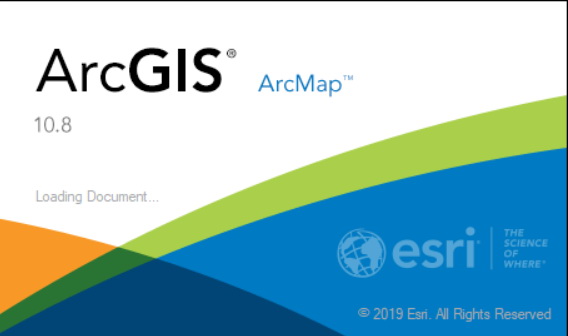
ArcGIS ve verzi 10.8.1 je poslední verzí, která obsahuje ArcMap, a tato a k ní přidružené aplikace budou podporovány do 1. března 2026, jak je uvedeno v produktovém životním cyklu pro ArcMap. ArcMap bude i po 1. březnu 2026 možné dál využívat, dokud bude mít uživatel platnou licenci. Veškerý vývoj pro desktop je však zaměřen na ArcGIS Pro a všem uživatelům je doporučeno svou […]
The post Budoucnost podpory aplikace ArcMap (TZ) appeared first on GISportal.cz.
Bluesky National Tree Map Reveals Carbon Capture Potential of Natural Woodlands
29.1.2021 9:00 GISCafe.com Webcasts-Webinars Leicestershire, UK, 28 January 2021 - A map detailing the location and attributes of more than 300 million trees across the UK is being used to …Výroční zpráva dle zákona č. 106/1999 Sb. za rok 2020
29.1.2021 7:48 ČÚZK - předpisy a opatření Zeměměřický a katastrální inspektorát v Prazevydává výroční zprávu úřadu za rok 2020
2020
Výroční zpráva dle zákona č. 106/1999 Sb. za rok 2020
29.1.2021 7:48 ČÚZK /Urady/Zememericke-a-katastralni-inspektoraty/Zememericke-a-katastralni-inspektoraty/Zememericky-a-katastralni-inspektorat-v-Praze/Vyrocni-zpravy/Vyrocni-zprava-dle-zakona-c-106-1999-Sb-za-rok-(3)L3Harris Technologies Announces 20 Percent Quarterly Dividend Rate Increase and New $6 Billion Share Repurchase Authorization
29.1.2021 2:17 GISCafe.com Webcasts-Webinars MELBOURNE, Fla. — (BUSINESS WIRE) — January 28, 2021 —The Board of Directors of L3Harris Technologies (NYSE:LHX) has approved a …
Pramení Amazonka v Karolinu? [Knihovna geografie, byTopic]
29.1.2021 0:00 Katedra aplikované geoinformatiky a kartografie Přf UK Výstava připravená k životnímu jubileu prof. Bohumíra Janského bilancuje úspěchy českých vědců při cestě za objevením pramenů „královny řek“ na přelomu tisíciletí. Výstava v pražském Karolinu bude k vidění po několik prvních měsíců roku 2021 - jak to podmínky v souvislosti s pandemií koronaviru dovolí.New Esri Book Describes Crime Analysis for a Broad Audience
28.1.2021 21:01 GISCafe.com Webcasts-Webinars Understanding Crime Allows Anyone to Understand Geospatial Approaches to Law EnforcementREDLANDS, Calif. — (BUSINESS WIRE) — January 28, …
Esri Releases Updated Guide to Analytic Algorithms and Methods
28.1.2021 21:01 GISCafe.com Webcasts-Webinars New Book Helps Readers Understand Spatial Measurement and StatisticsREDLANDS, Calif. — (BUSINESS WIRE) — January 28, 2021 —
Esri, …
Větší provázanost BIM a dalších digitálních agend státu má zajistit přesun meziresortní pracovní skupiny pod radu vlády pro informační společnost
28.1.2021 18:49 BIM NewsMeziresortní pracovní skupina pro zavádění metody BIM v ČR (dále jen „PS BIM“) byla založena 1. srpna 2019 za účelem zajištění koordinace a komunikace při plnění vládní Koncepce zavádění metody BIM v ČR (dále jen „Koncepce“) mezi subjekty veřejné, soukromé a akademické sféry. Součástí plnění Koncepce je i zajištění vazby BIM na ostatní digitální agendy […]
The post Větší provázanost BIM a dalších digitálních agend státu má zajistit přesun meziresortní pracovní skupiny pod radu vlády pro informační společnost appeared first on BIM News.
TurboCAD Deluxe v akční ceně do 10. 12. 2021
28.1.2021 18:28 ŠPINAR - softwareVážení zákazníci,
dovolujeme si Vám nabídnout program TurboCAD Deluxe, pro kreslení ve 2D / 3D prostoru včetně fotorealistických vizualizací v akční ceně do 10. 02. 2021.
The post TurboCAD Deluxe v akční ceně do 10. 12. 2021 appeared first on ŠPINAR – software.
TurboCAD Deluxe v akční ceně do 10. 12. 2021
28.1.2021 18:28 ŠPINAR - software Vážení zákazníci,dovolujeme si Vám nabídnout program TurboCAD Deluxe, pro kreslení ve 2D / 3D prostoru včetně fotorealistických vizualizací v akční ceně do 10. 02. 2021.
TurboCAD Deluxe v akční ceně do 10. 02. 2021
28.1.2021 18:28 ŠPINAR - softwareVážení zákazníci,
dovolujeme si Vám nabídnout program TurboCAD Deluxe, pro kreslení ve 2D / 3D prostoru včetně fotorealistických vizualizací v akční ceně do 10. 02. 2021.
The post TurboCAD Deluxe v akční ceně do 10. 02. 2021 appeared first on ŠPINAR – software.
Citadel Defense Lands Multi-Million Dollar Contract for their AI Powered Counter Drone System
28.1.2021 18:03 GISCafe.com Webcasts-Webinars Citadel’s Titan will protect ships, vehicles, robotic platforms, and bases from drone threats and swarmsSAN DIEGO — (BUSINESS WIRE) — …
Panzura Wins 2020-21 Cloud Awards "Best Hybrid Cloud Solution"
28.1.2021 16:36 GISCafe.com Webcasts-Webinars International Cloud Computing Awards Program Cements Panzura as De Facto Standard in Global Cloud File System TechnologiesSAN JOSE, Calif., Jan. 28, …
New IBM TRIRIGA Capabilities to Help Support Organizations' Return to Work with AI-Driven Space Planning
28.1.2021 16:36 GISCafe.com Webcasts-Webinars Dynamic space planning, indoor wayfinding and a digital assistant help enable flexible workplacesARMONK, N.Y., Jan. 28, 2021 — (PRNewswire) …
Low-cost High Resolution Nighttime Light Data: New Light Technologies and Alba Orbital are Partnering to Provide Innovative Solutions and Services
28.1.2021 16:36 GISCafe.com Webcasts-Webinars WASHINGTON, Jan. 28, 2021 — (PRNewswire) — New Light Technologies Inc. (NLT) is partnering with Alba Orbital to provide agencies …Výroční zpráva dle zákona č. 106/1999 Sb. za rok 2020
28.1.2021 15:37 ČÚZK /Urady/Katastralni-urady/Katastralni-urady/Katastralni-urad-pro-Jihocesky-kraj/Vyrocni-zpravy/Vyrocni-zprava-dle-zakona-c-106-1999-Sb-za-rok-(2)Výroční zpráva dle zákona č. 106/1999 Sb. za rok 2020
28.1.2021 15:37 ČÚZK - předpisy a opatření Katastrální úřad pro Jihočeský krajvydává výroční zprávu úřadu za rok
2020
ÚPRAVA ÚŘEDNÍCH HODIN od 1.2.2021
28.1.2021 11:53 ČÚZK /Urady/Katastralni-urady/Katastralni-urady/Katastralni-urad-pro-Olomoucky-kraj/O-uradu/Aktuality/UPRAVA-UREDNICH-HODIN-od-1-2-2021ÚPRAVA ÚŘEDNÍCH HODIN od 1.2.2021
28.1.2021 11:53 ČÚZK - předpisy a opatření Katastrální úřad pro Olomoucký kraj zveřejnil novou aktualitu: ÚPRAVA ÚŘEDNÍCH HODINS ohledem na platná usnesení vlády ČR, o přijetí krizového opatření
upravujeme úřední hodiny na všech katastrálních pracovištích v působnosti KÚ pro Olomoucký kraj
s platností od pondělí 1. února 2021 takto:
KATASTRÁLNÍ PRACOVIŠTĚ OLOMOUC
pondělí a středa 8:00 až 17:00 hodin,
KATASTRÁLNÍ PRACOVIŠTĚ HRANICE, JESENÍK, PROSTĚJOV, PŘEROV A ŠUMPERK
pondělí 8:00 až 13:00 hodin a středa 12:00 až 17:00 hodin
Podrobné informace jsou uvedeny v přiloženém dokumentu (PDF).
Děkujeme za pochopení.
První virtuální Konference GIS Esri v ČR
28.1.2021 9:47 blog ARCDATA Ve dnech 4.–5. listopadu se kanceláře firmy ARCDATA PRAHA proměnily na dvě profesionální vysílací studia. 29. ročník Konference GIS Esri v ČR se totiž stal prvním, který se musel odehrát pouze virtuálně.Mapped by Sentinel-1 for Vendée Globe safety
28.1.2021 9:20 ESA Observing the Earth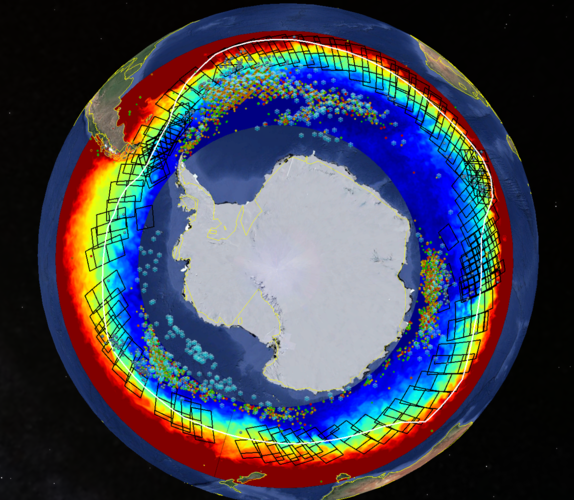 Image:
Competitors of the Vendée Globe sailing race are now nearing the finishing point, but while they were near the treacherous iceberg-infested waters of the Southern Ocean they remained relatively safe thanks to satellite observations.
Image:
Competitors of the Vendée Globe sailing race are now nearing the finishing point, but while they were near the treacherous iceberg-infested waters of the Southern Ocean they remained relatively safe thanks to satellite observations.
















